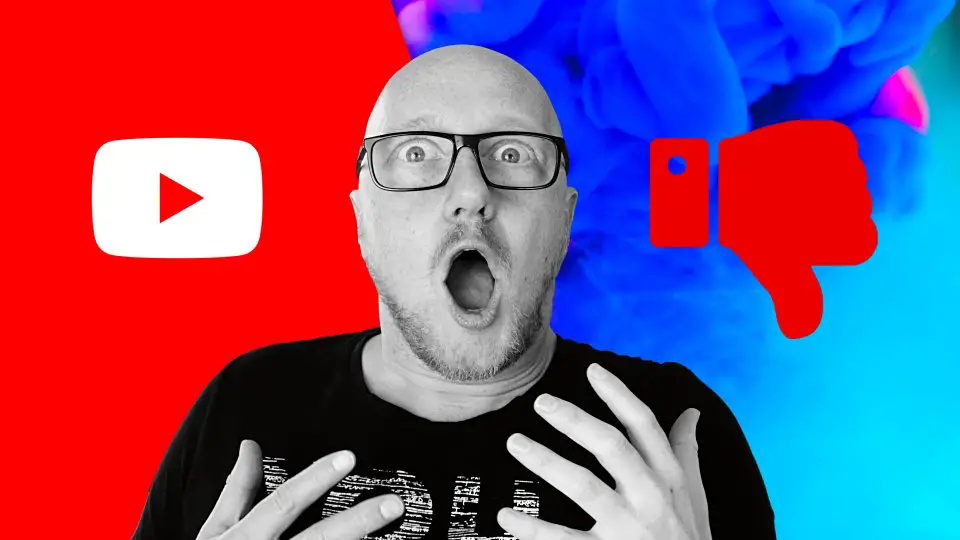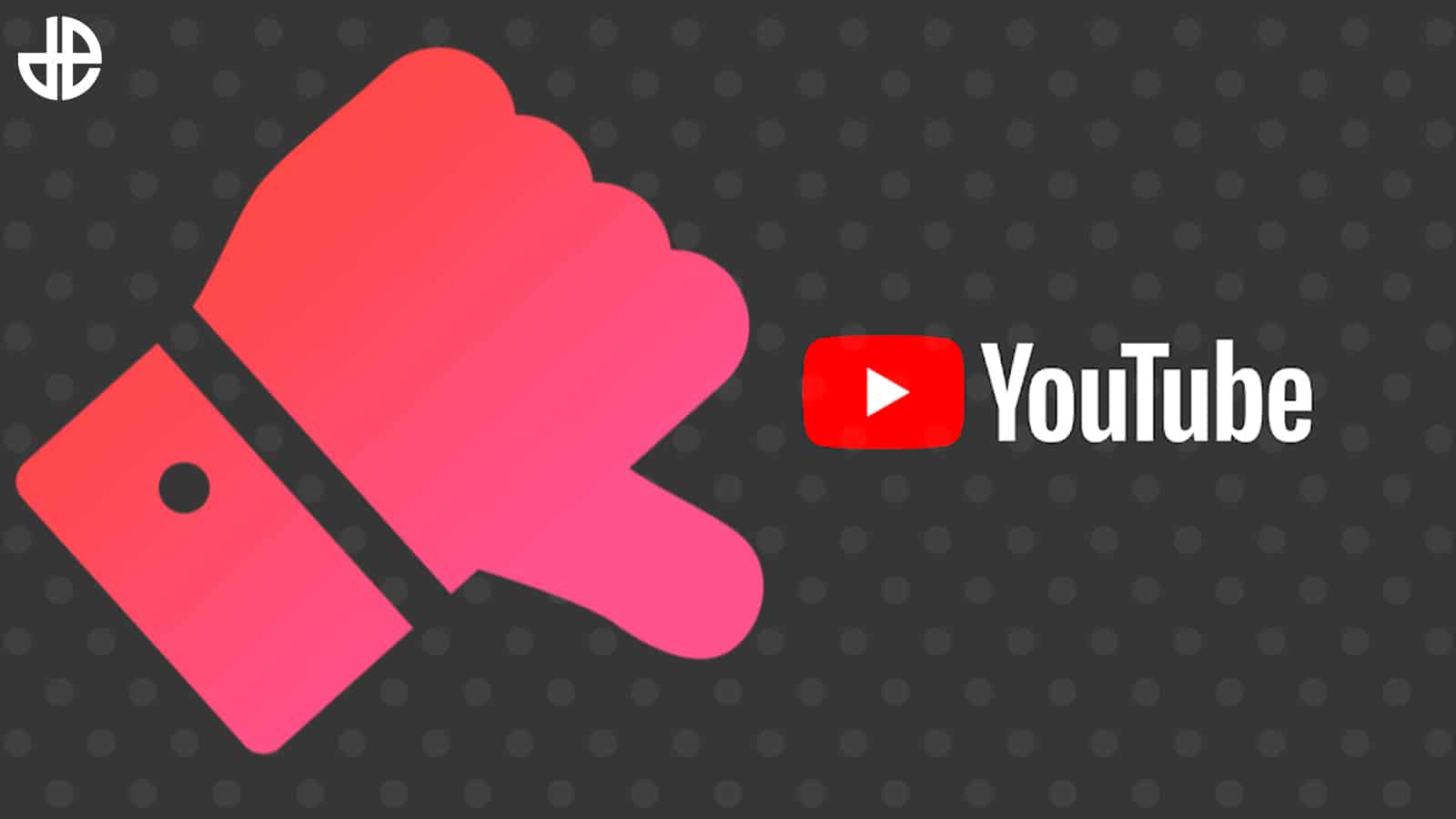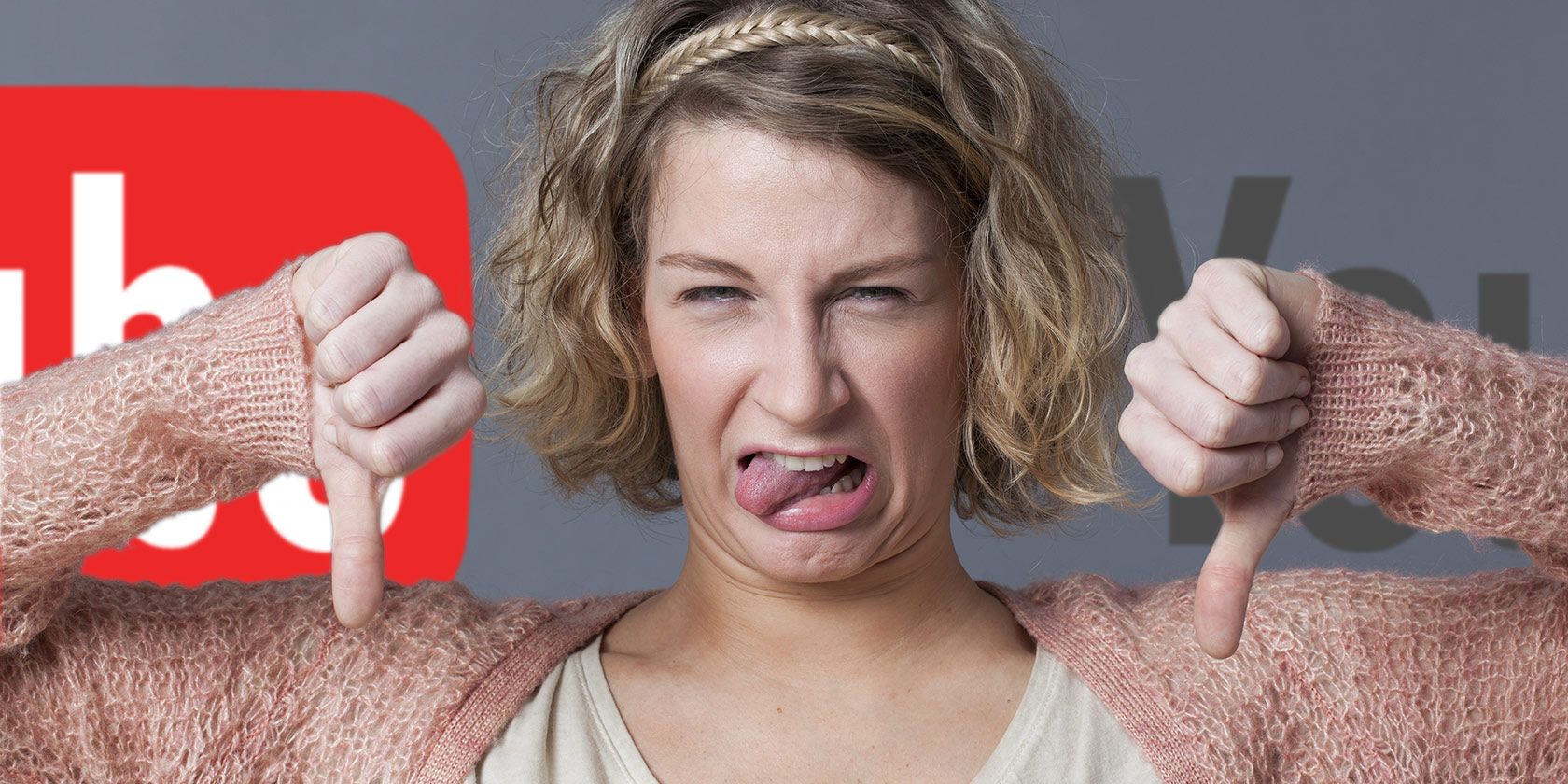YouTube is an incredible platform that connects millions of creators with diverse audiences worldwide. However, along with every "like," there often come a few "dislikes." It’s easy to brush these off as a small part of the feedback spectrum, but understanding viewer responses, including the negative ones, can be crucial. In this blog post, we're diving into why some viewers might dislike videos and what that feedback really means for creators and the YouTube community at large.
The Importance of Understanding Viewer Dislikes

When a viewer hits that dislike button, it may feel disheartening, especially for content creators pouring their heart and soul into every video. But before we jump to conclusions about the negative feedback, let’s explore why it matters:
- Insight into Audience Preferences: Dislikes provide valuable insight into what your audience does not enjoy. For example, if you receive several dislikes on a video about a specific topic, it might indicate that your viewers are looking for different content.
- Encouragement for Improvement: Constructive criticism, even when delivered through dislikes, can inspire creators to hone their craft. By addressing the concerns raised by viewers, you can create higher-quality content that resonates better with your audience.
- Engagement Metrics: YouTube's algorithm takes viewer engagement into account. A mix of likes and dislikes can signal a healthy discussion, which may boost visibility on the platform. After all, any engagement is generally better than none!
- Setting Realistic Expectations: Every creator dreams of making universally loved content. However, the reality is that you can’t please everyone. Understanding that dislikes are a natural part of the process can help creators manage their expectations.
- Audience Diversity: YouTube is filled with a melting pot of personalities and preferences. A dislike from one viewer can simply reflect that they are not your target demographic. Recognizing this diversity allows creators to focus on their core audience rather than trying to cater to everyone.
So, what can you do with this information? First, take a deep breath! Dislikes aren’t the end of the world; they are stepping stones to growth. Here are some strategies to consider:
| Strategy | Description |
|---|---|
| Analyze Feedback | Look at the comments section and see if viewers are sharing specific reasons for their dislikes. Take this feedback seriously. |
| Experiment with Content | Use dislikes as a reason to experiment with new formats or topics. Don’t be afraid to pivot based on the data. |
| Build a Community | Engage with your audience. Foster a community where feedback, both positive and negative, is openly discussed. |
In summary, letting dislike metrics guide content decisions is a smart move. Understanding why some people dislike your videos can lead not only to personal growth as a creator but also to a more effectively targeted and engaging viewer experience.
Also Read This: Uploading a Facebook Video to YouTube: A Complete Walkthrough
3. Common Reasons Behind Dislike on YouTube Videos

You might wonder, “Why do some viewers decide to hit that dislike button instead of just scrolling past a video?” It's a good question, and the reasons can often be quite varied and personal. Here are some of the most common reasons viewers choose to express their dissatisfaction through dislikes:
- Content Quality: Viewers expect a certain level of quality in the videos they choose to watch. If the lighting is poor, the audio is hard to hear, or the editing feels rushed, they might express their disappointment.
- Misleading Titles or Thumbnails: Clickbait is a double-edged sword. While it can attract viewers, it can also lead to dislike when the actual content doesn’t match the promise of the title or thumbnail.
- Repetitive Content: If a creator keeps posting similar content without any variation or improvement, long-time viewers may feel frustrated and express this through dislikes.
- Controversial Topics: Discussing sensitive or divisive topics can lead to strong opinions. A video that touches on politics, social issues, or controversial news might receive negative feedback no matter the creator's intention.
- Creators’ Attitudes: Sometimes it’s not the content itself but how it’s presented. If a creator comes off as arrogant, rude, or dismissive, viewers may react negatively.
- Changes in Format: Sudden changes in video format or style can catch loyal fans off guard. If a creator shifts from vlogs to heavily edited tutorials, dedicated fans might feel alienated.
Understanding these reasons can help both creators and viewers engage better. As a creator, taking viewer feedback seriously—while still staying true to your vision—can create a more supportive community. For viewers, acknowledging that everyone has different tastes could foster a more positive interaction with content.
Also Read This: Is the Browns Game on YouTube TV? Accessing NFL Content on Streaming Platforms
4. The Impact of Viewer Dislikes on Content Creators

When creators see dislikes stacking up on their videos, it’s hard not to take it personally. After all, content creation is often a labor of love. But just how much of an impact do those dislikes really have on creators? Let's explore a few key points:
- Mood and Motivation: A spike in dislikes can affect creators' morale. It’s only human to feel disheartened if their hard work is met with negative feedback, leading to potential burnout or decreased motivation.
- Reputation and Growth: Dislike ratios can influence how potential new viewers perceive a channel. A high dislike count might deter new viewers from clicking on a video, impacting future growth.
- Content Changes: Creators often adapt their content based on viewer feedback. A surge in dislikes might prompt them to pivot their style or approach, ideally aiming for a balance between authentic expression and audience preference.
- Engagement Response: Some creators proactively engage with their audience by addressing dislikes in comments or follow-up videos. This can often transform a negative situation into a discussion, leading to constructive dialogue about preferences.
- Analytics Insight: On the bright side, dislikes can provide valuable analytics. They serve as a signal to creators about what their audience does not enjoy, aiding them in making more informed content decisions in the future.
Ultimately, while dislikes can sting and have various effects, they can also serve as a vital part of the feedback loop. Taking them to heart without allowing them to dictate your creative expression is an important lesson many successful content creators learn over time.
Also Read This: Is YouTube Music Growing? The Rise of YouTube's Streaming Service
5. How to Gather and Analyze Viewer Feedback
So, you're wondering how to get a better grip on what your audience really thinks about your YouTube videos? Gathering and analyzing viewer feedback isn't just a nice-to-have—it's essential for growing your channel and improving your content. Here are some practical steps to help you out:
- Engage with Comments: The comments section is like gold for understanding viewer perspectives. Take the time to read through comments on your videos. Look for patterns in the feedback—are viewers excited, confused, or critical? Responding to comments can also foster a sense of community.
- Use Polls and Surveys: YouTube offers the option to create polls in your community tab. This is a phenomenal way to directly ask your audience for feedback on what they like or dislike and what they want to see more of in the future.
- Analyze Video Analytics: YouTube provides a wealth of data through its analytics tools. Check the metrics that matter, such as watch time, likes/dislikes ratio, and audience retention. A dip in retention might indicate dull segments, while high engagement at certain points can inform you about what content resonates.
- Social Media Outreach: Don’t limit your feedback collection to YouTube itself. Use your other social media platforms to ask for thoughts and suggestions. A post requesting feedback can yield valuable insights from different demographics.
- Focus Groups: If you’re serious about your channel, consider forming a focus group with a few loyal viewers. Discussing your videos in real-time can reveal nuances and sentiments that written comments might miss.
Once you’ve gathered this feedback, it’s time to analyze it. Look for recurring themes in the comments and analytics. If multiple people mention they find your intro too long, that’s something to consider adjusting. The key is to balance constructive criticism with your own creative vision. Remember, not all feedback will apply, but a lot of it can lead to valuable insights!
Also Read This: How to Get the Old YouTube Layout Back: Restoring the Classic YouTube Interface
6. Ways to Improve Viewer Engagement and Reduce Dislikes
So, you've done the legwork to understand why some viewers might not be loving your videos. Now, how can you actively improve viewer engagement and reduce those pesky dislikes? Here are some tried-and-true strategies:
- Content Quality: First and foremost, ensure your content is high quality. Invest in good lighting and sound equipment, and pay attention to your editing. People are more likely to engage with visually appealing and well-produced videos.
- Hook Them Early: The first few seconds of your video are crucial. Start with an engaging hook that reels viewers in. Ask a question, share a shocking fact, or tease something exciting that will happen later in the video.
- Be Authentic: Authenticity goes a long way. Show your personality and be relatable. When viewers feel a connection with you, they’re less likely to hit the dislike button.
- Encourage Engagement: At the end of your videos, ask viewers to like, comment, and subscribe. Clearly stating what you’d like them to do can increase engagement significantly. A friendly reminder to engage can make all the difference.
- Respond to Feedback: If viewers offer constructive criticism, take it to heart. If you make changes based on feedback, let your audience know! Showing that you listen can create loyalty and encourage a positive community.
Ultimately, improving viewer engagement is about creating a cycle of positive interaction. The more you engage with your audience, the more they’ll want to interact with you. It's an ongoing process, but with effort and creativity, you'll see those dislikes dwindle and those likes soar!
Conclusion: Embracing Feedback for Better Content Creation
In the ever-evolving landscape of content creation, feedback serves as a crucial compass that guides creators toward improvement. Understanding why some viewers may dislike certain YouTube videos can be invaluable in enhancing your future work. Here are a few key takeaways to consider:
- Value Viewer Opinions: Remember, every comment or critique can offer insights into what resonates with your audience.
- Adapt to Trends: Stay updated on current trends and viewer preferences to keep your content relevant.
- Refine Your Niche: Identify your target audience and tailor your content to meet their expectations.
Moreover, the way feedback is analyzed can transform it from mere criticism into a powerful tool for growth. Here are some strategies to effectively incorporate feedback:
| Strategy | Description |
|---|---|
| Actively Engage | Respond to comments to show viewers that you value their opinions. |
| Solicit Constructive Criticism | Encourage your audience to provide specific feedback on what they liked or disliked. |
| Analyze Viewer Metrics | Keep an eye on watch time, click-through rates, and audience retention to gauge content effectiveness. |
In conclusion, embracing feedback, whether positive or negative, is essential for any content creator wishing to thrive on platforms like YouTube. By actively listening to your audience and making the necessary adjustments, you can foster a deeper connection, improve your content quality, and enhance viewer satisfaction. Ultimately, this collaborative approach not only elevates your work but also cultivates a loyal community around your channel.
 admin
admin








